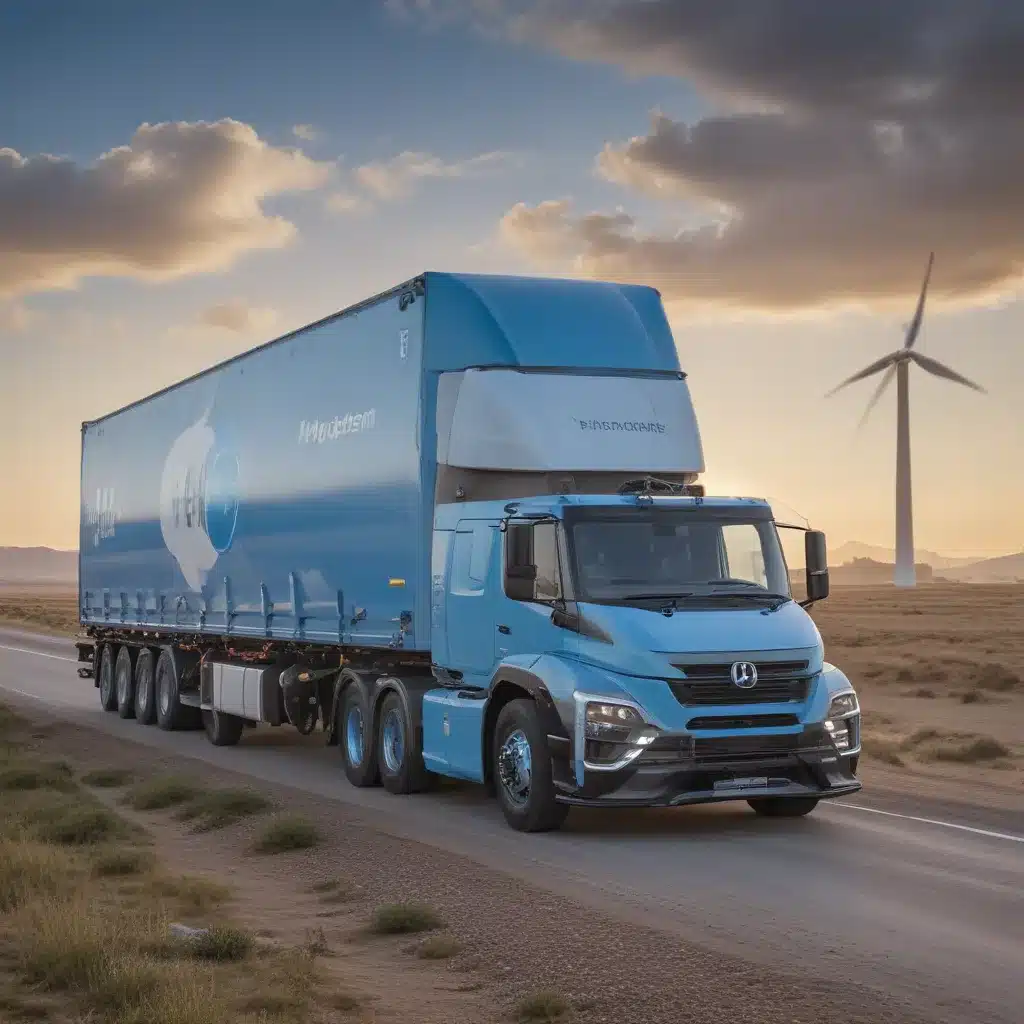
The Promise of Hydrogen: Fueling a Clean Energy Revolution
You know, when I first heard the term “hydrogen economy,” I have to admit, I was a bit skeptical. Another fad, I thought, another overhyped solution to our energy woes. But then I started digging deeper, and let me tell you, I was blown away by the sheer potential of this technology to transform the way we power our world.
Imagine a future where our cars, our homes, our industries – heck, even our airplanes – are all running on clean, renewable hydrogen. A future where the only byproduct of our energy consumption is water, not pollutants or greenhouse gases. That’s the promise of the hydrogen economy, and it’s a future that’s closer than you might think.
The International Energy Agency (IEA) has been doing some fascinating research on this topic, and their findings have got me truly excited. They’ve identified four key “springboard opportunities” that could help propel the hydrogen economy into the mainstream. Let’s dive in, shall we?
Springboarding Towards a Hydrogen-Powered Future
1. Decarbonizing Industry
One of the biggest challenges we face in the fight against climate change is the carbon-intensive nature of many industrial processes, like steel production and chemical manufacturing. But hydrogen could be the answer. By using hydrogen as a fuel or feedstock, these industries could dramatically reduce their emissions, paving the way for a cleaner, greener future.
Just imagine – instead of belching out plumes of black smoke, these industrial behemoths could be churning out nothing but water vapor. It’s a game-changer, and the IEA reckons it could be one of the fastest ways to get the hydrogen economy off the ground.
2. Powering Transportation
Now, I know what you’re thinking – “But what about electric vehicles? Aren’t they the future of transportation?” Well, my friend, think again. Hydrogen-powered vehicles, or “fuel cell electric vehicles” (FCEVs), are rapidly gaining ground, and they’ve got some serious advantages over their battery-powered counterparts.
For starters, they can go much further on a single “fill-up,” making them perfect for long-haul trucking and aviation. And the refueling process is a breeze – just a quick stop at the hydrogen pump, and you’re back on the road in minutes. Plus, with no emissions other than water, they’re about as clean as it gets.
3. Heating and Powering Buildings
But it’s not just transportation that’s getting the hydrogen treatment. The IEA also sees huge potential in using hydrogen to heat and power our buildings, from homes to commercial facilities. Imagine a future where your local hospital or office block is running on clean, reliable hydrogen fuel cells, providing efficient and sustainable energy.
Not only would this help reduce our carbon footprint, but it could also improve energy security by diversifying our energy sources and reducing our reliance on fossil fuels. And let’s not forget the potential for hydrogen to help integrate more renewable energy into the grid, smoothing out those pesky fluctuations in solar and wind power.
4. Exporting Renewable Energy
Here’s where things really start to get exciting. The IEA believes that hydrogen could become a game-changer when it comes to transporting renewable energy over long distances. Imagine being able to harness the abundant solar and wind resources of places like Australia or Latin America, and then shipping that clean energy halfway across the world in the form of hydrogen.
This could be a real boon for energy-hungry regions that don’t have the luxury of vast renewable resources on their doorstep. And the best part? Hydrogen can be easily converted back into electricity or other fuels when it reaches its destination, making it a highly versatile energy carrier.
Overcoming the Challenges
Now, I know what you’re thinking – if hydrogen is so great, why haven’t we all switched over to it already? Well, as with any transformative technology, there are a few challenges that need to be overcome.
For one, the production of “green” hydrogen (the kind made from renewable sources) is still relatively expensive compared to the “gray” hydrogen made from fossil fuels. But the IEA is confident that with the right policies and investment, we can drive down those costs and make hydrogen a truly viable option.
And then there’s the infrastructure hurdle. Building out the network of hydrogen production facilities, storage tanks, and fueling stations is going to require a massive coordinated effort from governments and industry. But hey, if we can put a man on the moon, I’m sure we can figure out how to get hydrogen pumps on every street corner.
Seizing the Hydrogen Opportunity
The bottom line is this: the hydrogen economy is no longer a pipe dream. It’s a real, tangible solution to some of our most pressing energy and environmental challenges. And with the right support and investment, it could be the key to powering a cleaner, more sustainable future for all of us.
So, if you’re like me and you’re excited about the prospect of a hydrogen-fueled world, I encourage you to stay informed, get involved, and be a part of the clean energy revolution. After all, who knows – maybe one day, your local computer repair shop will be running on nothing but good old H2. The future is bright, my friends, and it’s powered by hydrogen.












